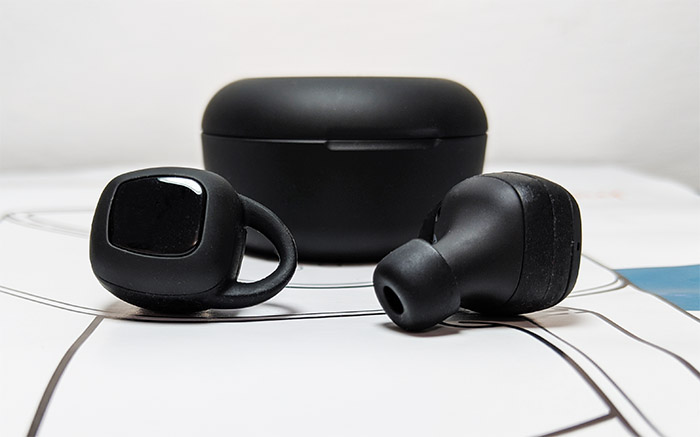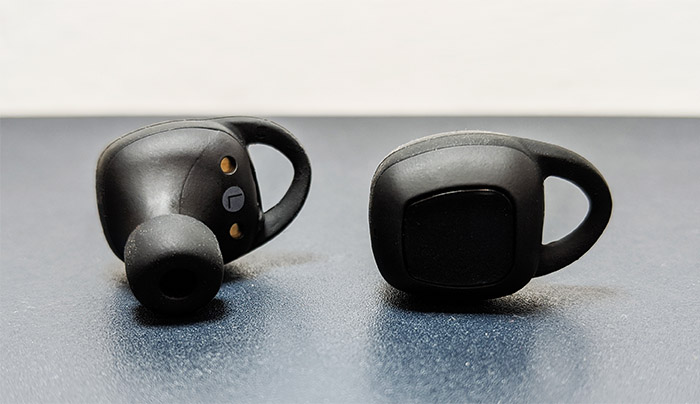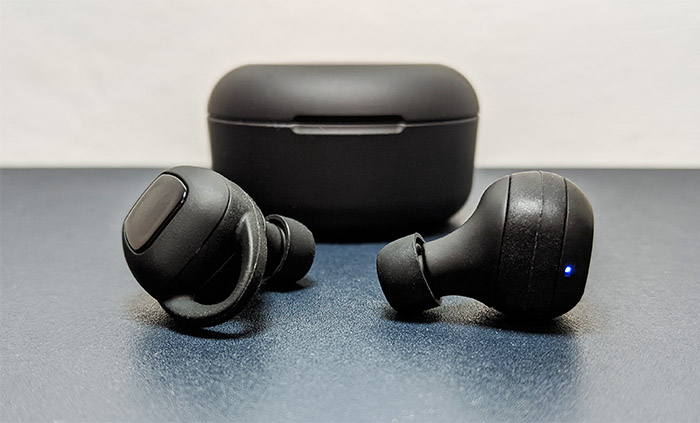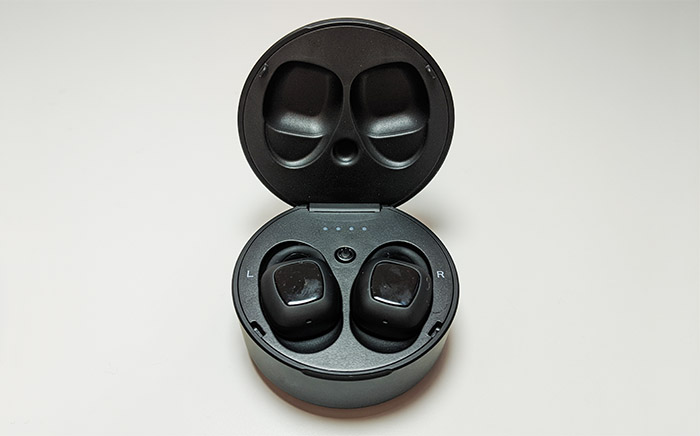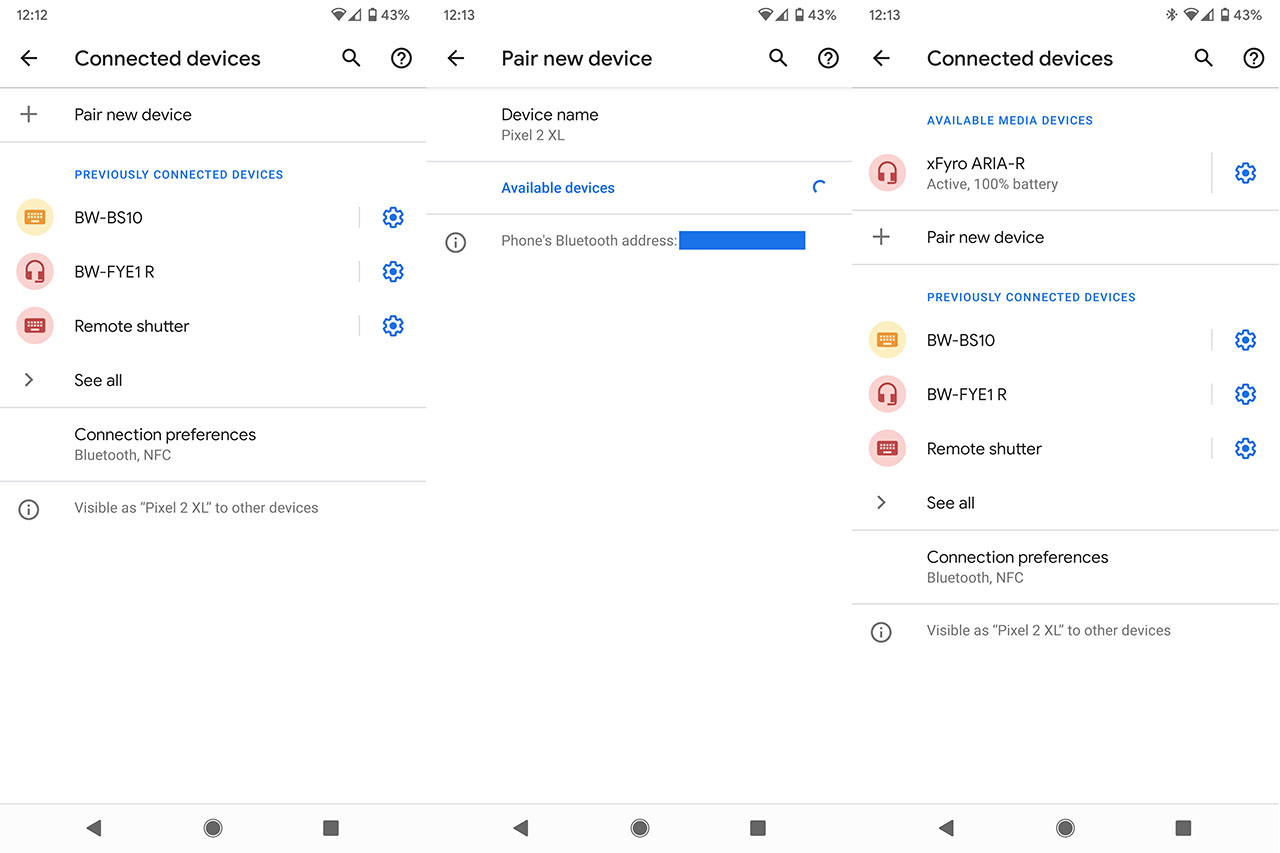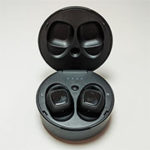The true wireless earbuds market has been booming ever since the manufacturers decided cut the cable between the earpieces and, while there was some skepticism about the audio quality or whether they’re going to be easier to lose, the audience seems to have fully embraced these tiny new devices, so there is barely any talks about anything else in the sound department (with the exception of the active noise canceling headphones which are also experiencing a growing interest).
On the higher end spectrum, there’s the likes of WF-1000XM3 from Sony or the AirPods Pro from Apple, while the lower-end has probably thousands of models to choose from and somewhere in the middle, there’s xFyro which currently has two models available, the xS2 and the Aria, both born from some successful Indiegogo campaigns, although not completely free of controversies (the shipping time can be very slow).
A few months ago, I tested the xS2 true wireless earbuds and since then, I actually got to use them a lot more often than expected (almost daily for about an hour) and, apart from some very rare disconnects between the earbuds, I had zero problems so far. I’m still not a fan of the shape of the earbuds themselves and the Aria does seem to be addressing this possible annoyance, featuring some conveniently placed hooks, therefore making the earbuds suitable for jogging and other outdoors activities.
Furthermore, the xFyro Aria earbuds are waterproof and the manufacturer says that the battery life can reach up to 8 hours, which is a very bold statement, so let’s have a close look at its sound performance and if the aforementioned claims hold true.
Note 1: Just like with the xS2, xFyro is again being weird with the price tag, displaying a MSRP that is always discounted, so I will review the earbuds as mid-rangers, otherwise, they’ll go against the higher-end models, which I think will be unfair, considering that you can almost always get them at around $100.
Note 2: If you decide to purchase these earbuds, you can experience a significant delay before actually receiving them.
Built Quality and Design
The traditional earbuds were a lot easier to build since the manufacturer had to follow a foolproof blueprint and mainly focus towards the sound quality, but the true wireless earbuds have brought the need to carefully engineer each part of the device to get the perfect in-ear balance to ensure a comfortable wearing experience over a longer period of time and, at the same time, the manufacturer also had to put a lot more hardware within the small body of the earpieces, while never forgetting about the sound quality through the Bluetooth connection. This means that any cut corners will become immediately evident and, while you won’t be able to see a clear difference between an entry-level and a higher-end pair of earbuds, you will definitely feel it after you put them in your ears.
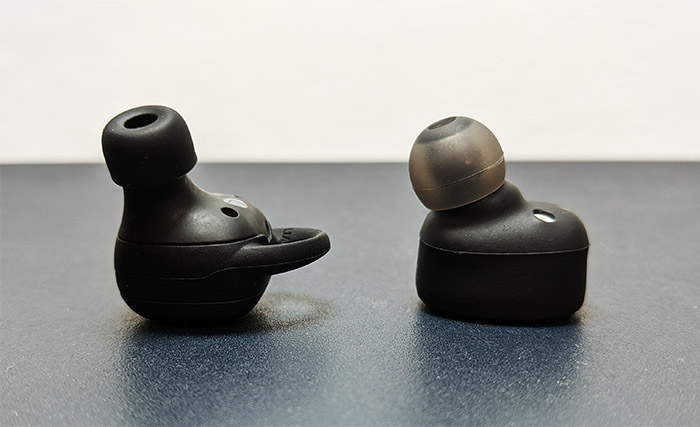
Being a mid-ranger, I expect the xFyro Aria to be comfortable and the charging case to be easily portable. Fortunately, the earbuds seem to have done well on both fronts. The xFyro xS2 were a pair of relatively small earbuds, with a short neck, so you wouldn’t have to push them too deep in the ear canal and, while the Aria earpieces aren’t bigger (only more squarish), the neck is a lot more prominent (the earbuds measure 0.9 x 0.7 x 1.0 inches HLW).
This does mean that using the right pair of silicone tips, you do get a better sound isolation, but it can also irritate the ear canal a lot easier – this is a matter of preference, since I don’t like earbuds that need to be pushed inside my brain. Thanks to the additional hooks, I could reach the right balance and I found that the xFyro Aria could sit a lot better than the xS2 (and most other earbuds that I have tested so far). I also noticed that no matter how hard I would move my head, they wouldn’t fall off and, as I always say that you shouldn’t use earbuds that don’t have hooks while doing outdoor activities, the Aria are suited for both jogging and any other outdoor sports (you won’t have to search them on the subway tracks as you would with the AirPods – yes, apparently that’s a thing now). Apart from that, the xFyro Aria are completely covered by a black finish and they do have a rubbery texture (so they’re easy to grip) and on the outer side, the manufacturer decided to add some rectangular piece of glossy plastic (one on each earpiece) to cover the physical button – it also worth noting that there is a tiny LED indicator on the bottom of each earbud.
The functions of the buttons are a bit different than on the xS2, so, after you take the earbuds out of the case if you press the button for about two seconds, it will turn on the earpieces which will make the LED flash between red and blue waiting to be paired to a mobile device. When you are listening to music, you can move to the previous track by holding the button on the left earbud for about 2 seconds and to the next track by holding the button on the right earbud; you can also increase and lower the volume (finally!) by either double tapping on the right or left earpiece button and it does work great (I use the middle finger and the thumb to keep the earbud steady and the index finger to quickly double tap the button).
In case a call comes when you’re wearing the earbuds, you can answer it by tapping any button (tap again to end the call) and to reject a call, press and hold either buttons; you can also switch between calls by tapping any of the buttons when the second call comes in and hold the button to end either call. The Aria truly wireless earbuds can also work with Siri or Google Assistant: when the earbuds aren’t playing any music, tap the left button to activate the assistant and tap the right button to pause it (tap it again to re-activate it).
Would a touch-sensitive button be better? The answer is mostly yes considering that when you push the button, it can irritate the ear canal, even if you hold the earbuds when pressing. If we have a look at the xFyro xS2’s recharging case, it was definitely unique and there were some good ideas implemented such as the the magnetically attached earbuds to the sides or the fact that it doubled as a power bank, but, unfortunately none of these elements have been ported to the new version mainly due to the user complaint, so, while I did find them useful, apparently, lots of users did not. The recharging case that comes with the Aria earbuds is a bit more conventional, but still very practical due to its small size, therefore making it very easy to carry the earbuds around (it measures 2.16 inches in diameter and it’s 1.1-inches tall).
There are no LED indicators outside the case and to see the remaining battery life, you will have to open the top lid (it closes magnetically) in order to expose four LEDs, each corresponding to 25% of battery life. Within the case, you will also notice two dedicated areas for the two earbuds (these also attach magnetically) and a single button which has the role of allowing the case to recharge the earbuds.
The Power button is there so you can keep the case from losing any charge, but I’m not entirely sure that it significantly improves the battery life – instead, it’s quite confusing for the first-time users (I keep it always pressed, so that’s that). The charging case does have a micro-USB port (no Type-C) and inside the package, xFyro has added a fairly long charging cable. Lastly, it’s worth noting that similarly to the xS2, the xFyro Aria true wireless earbuds are IP67-rated, so they’re both fully protected against dust ingress and you can also use them while showering or while swimming on the surface – they can go as deep as 3 feet for about half an hour, but just be aware that the Bluetooth connection will not work at all while underwater.
Connectivity and Sound Quality
Quite recently, xFyro has updated the hardware used by xS2 and I do suspect that there isn’t much difference between it (in its current state) and the Aria earbuds, both featuring the latest Bluetooth 5.0 technology, allowing for a better and more stable connection than the previous version (it will heavily depend on the implementation considering that I haven’t had any problems with the Sony WH-1000XM3 which uses the Bluetooth v.4.2) and there also seems to be a higher throughput (up to 2Mbps) that can come handy in some situations (not that these earbuds will need that much). Additionally, I managed to find out that the Aria truly wireless earbuds uses 16mm drivers, so there is a lot of potential here and I do hope that xFyro has managed to push it to its full potential. Before that, it’s worth talking about the Bluetooth pairing process.
After opening the case for the first time, take the earbuds out and wait until both flash red and blue (if they don’t, press and hold the button until they turn on); afterwards, enable Bluetooth on your mobile device and connect to the right earbud which should automatically pair to the left one. As for coverage, it’s the same as with the other Bluetooth v.5 earbuds, so 30 feet is the maximum until you will see any disconnections – when I tested the xS2, I did not see any disconnects between the earpieces for a long period of time and the same can be said about Aria, but it is still possible for them to happen from time to time (in the last four months, the xS2 left earpiece briefly disconnected about 4 times).
When you put the earbuds back in the case, make sure that the button is set to the On position (it’s going to be depressed), so they can start charging. The xS2 did not support multi-point BT connections and it seems that neither does Aria, therefore, each time, you will have to turn off the Bluetooth connection and pair them to a new device. It’s worth noting that you can use a single earbud (it will enter mono mode automatically) and you will also be able to receive calls.
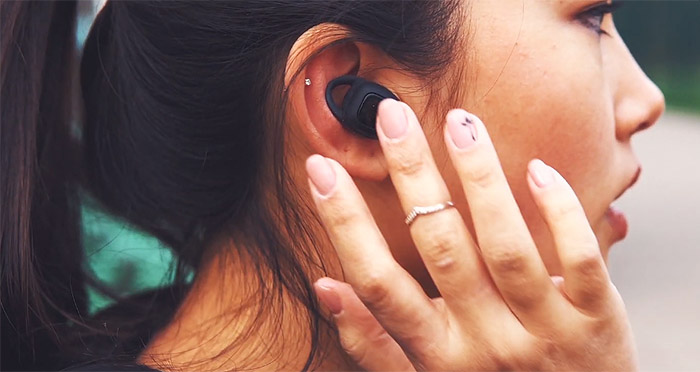
Speaking of which, how does the advertised beamforming microphone work during a call? It’s not good and truth be told, I haven’t seen any sub $100 truly wireless earbuds to deliver a better experience: I will hear the caller with every sound amplified to the maximum (a person in the kitchen will sound like artillery warfare), while the person on the other end will hear me and I quote ‘as if I put a pillow on the microphone’, so it will sound a lot more distant. Is a call doable? Of course, but don’t expect too much.
Running some basic tests, I found out that the xFyro Aria truly wireless earbuds can go down to 17Hz in terms of bass (the human ear can hear down to 20Hz, but you can still feel the vibration even at lower frequencies) and it could go up to 20KHz (which again, is the limit for the human ear); as for the quality test, there is a bit of buzz on the sweeping tone, although it was cleaner than most other entry-level earbuds, as expected. The driver matching test suggests that xFyro Aria can maintain the sound central, but this will be highly dependent on the earbud insertion. As for the real feel of the music, all I can say is that the earbuds are good, not fantastic, but they’re definitely above what some entry-level earbuds can offer and while not even close to audiophile level, it has a sound balance that most users will like.
Specifically, the focus is on the mid-bass which goes quite deep (due to the size of the dynamic driver?), but don’t expect it to be very detailed and you won’t easily be able to tell apart multiple bass-focused instruments that play at the same time. On the mid-range frequency, the sound was decently detailed and was overall acceptable (although nothing impressive), while the treble is probably its weakness, since the highs just weren’t there, so the overall emphasis is on the bass and, as I said before, this is a ‘mainstream sound’ that will be on the taste of the majority of people.
xFyro says that the earbuds use noise suppression and noise isolation to keep out the background noise, as well as to stop the sound from leaking and it’s done a decent job at it, since there is basically no sound leaking even at a higher volume. As for the background sound isolation, it’s purely passive, so it will depend on how deep you push the earbuds into the ear canal. As expected, there is no active noise cancellation involved and this is a technology that’s better used by the more expensive over ear headphones.
xFyro hasn’t stated how big is the battery inside each of the two earpieces, but it does claim that they can last up to 8 hours on a single charge which challenges the average 5-hour point of its main competitors. During my tests, the earbuds would last for an average of 5 hours and 45 minutes with the volume at 50 percent, with the right earbud being the first to turn off, while the left will remain active for at least another 30 minutes (the right earbud is apparently doing the heavy lifting). xFyro also says that a 15-minute charge can give you 3 hours of battery life and, while it’s true that the case charges very quickly, you will get about 1.5-2 hours after 15 minutes have passed while recharging the battery.
Note: When the battery reaches 30%, a voice will let you know that you need to charge them and will repeat this message every few seconds, so you won’t be able to listen to any music during this time.
Conclusion
The xFyro Aria are a good pair of truly wireless earbuds, offering all the features one may expect considering the price tag (the always discounted price tag which is around $100). The earpieces themselves were decently comfortable (unless you have to push the button which can irritate the ear canal – but you do get volume control) and the hooks make them suitable for jogging. Furthermore, the sound quality, although not even close to audiophile level, it’s quite good and if there are some serious shortcomings that are worth mentioning it’s not with the earbuds themselves, but with the shipping process which seems to always be long, very long. That being said, if you’re willing to wait until using the xFyro Aria, then you do get your money’s worth.
xFyro Aria
-Pros
- Acceptable sound quality
- IP67 rated (dust and water resistant)
- Good battery life
- Volume controls
- Suitable for jogging and other outdoor activities
Cons
- Slow delivery time
- The notification when the battery reaches 30% needs to be a one time only occurence
- Pushing the button can irritate the ear canal

